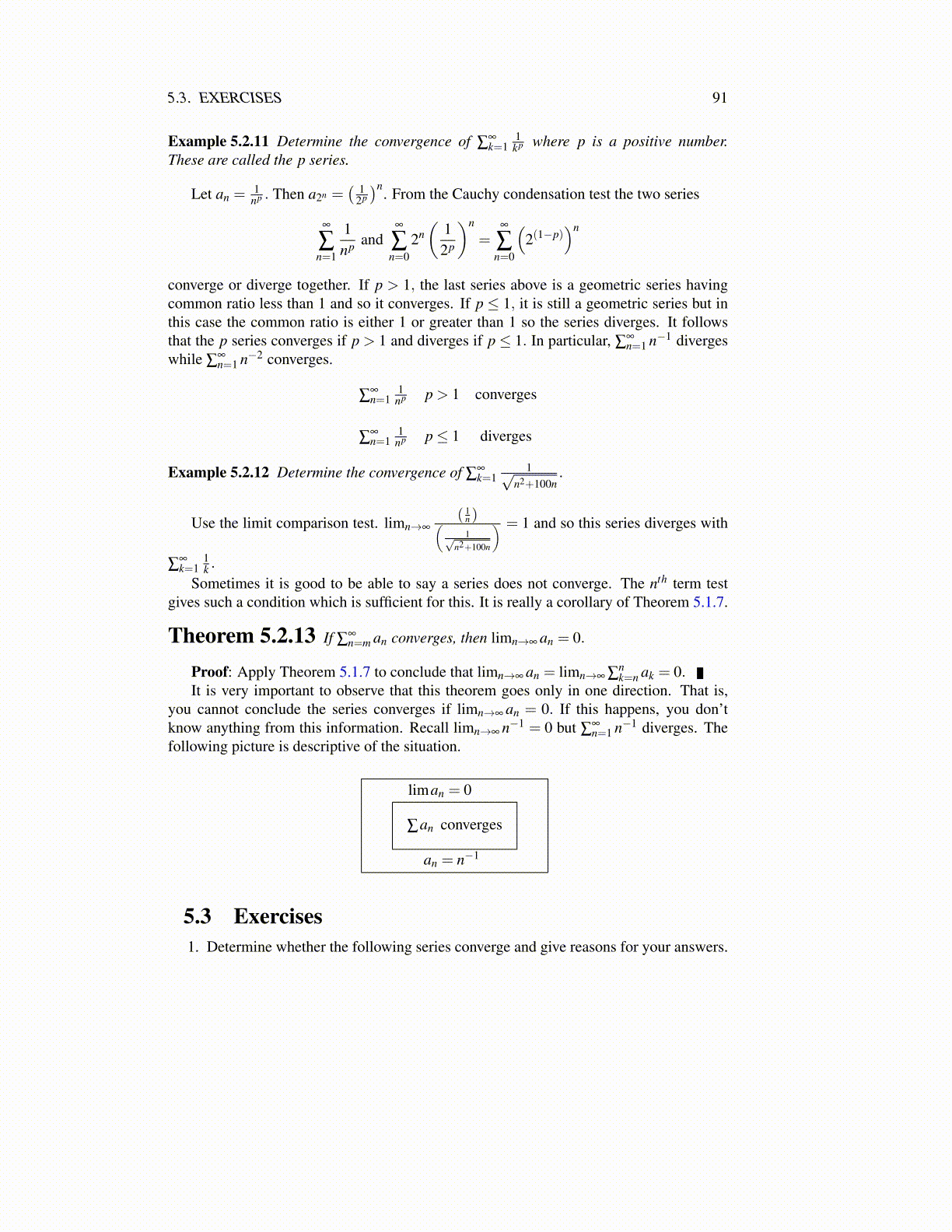
5.4. MORE TESTS FOR CONVERGENCE 91
Proof: This follows quickly from Theorem 5.1.7. Indeed, letting |An| ≤C, and usingthe partial summation formula above along with the assumption that the bn are decreasing,∣∣∣∣∣ q
∑n=p
anbn
∣∣∣∣∣=∣∣∣∣∣bqAq−bpAp−1 +
q−1
∑n=p
An (bn−bn+1)
∣∣∣∣∣≤C
(∣∣bq∣∣+ ∣∣bp
∣∣)+Cq−1
∑n=p
(bn−bn+1) =C(∣∣bq
∣∣+ ∣∣bp∣∣)+C (bp−bq)
and by assumption, this last expression is small whenever p and q are sufficiently large.
Definition 5.4.2 If bn > 0 for all n, a series of the form ∑k (−1)k bk or ∑k (−1)k−1 bkis known as an alternating series.
The following corollary is known as the alternating series test.
Corollary 5.4.3 (alternating series test) If limn→∞ bn = 0, with bn ≥ bn+1, then theseries, ∑
∞n=1 (−1)n bn converges.
Proof: Let an = (−1)n . Then the partial sums of ∑n an are bounded and so Theorem5.4.1 applies.
In the situation of Corollary 5.4.3 there is a convenient error estimate available.
Theorem 5.4.4 Let bn > 0 for all n such that bn ≥ bn+1 for all n and limn→∞ bn = 0.and consider either ∑
∞n=1 (−1)n bn or ∑
∞n=1 (−1)n−1 bn. Then∣∣∣∣∣ ∞
∑n=1
(−1)n bn−N
∑n=1
(−1)n bn
∣∣∣∣∣ ≤ |bN+1| ,∣∣∣∣∣ ∞
∑n=1
(−1)n−1 bn−N
∑n=1
(−1)n−1 bn
∣∣∣∣∣ ≤ |bN+1|
See Problem 8 on Page 97 for an outline of the proof of this theorem along with anotherway to prove the alternating series test.
Example 5.4.5 How many terms must I take in the sum, ∑∞n=1 (−1)n 1
n2+1 to be closer than1
10 to ∑∞n=1 (−1)n 1
n2+1 ?
From Theorem 5.4.4, I need to find n such that 1n2+1 ≤
110 and then n−1 is the desired
value. Thus n = 3 and so∣∣∣∑∞
n=1 (−1)n 1n2+1 −∑
2n=1 (−1)n 1
n2+1
∣∣∣≤ 110
Definition 5.4.6 A series ∑an is said to converge absolutely if ∑ |an| converges. Itis said to converge conditionally if ∑ |an| fails to converge but ∑an converges.
Thus the alternating series or more general Dirichlet test can determine convergence ofseries which converge conditionally.